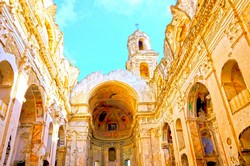Earthquake impacts of the medieval past
Throughout history, natural catastrophes have led to the demise of numerous communities and have affected local economies in dramatic ways. The EU-funded ARMEDEA(opens in new window) (Archaeology of the European Medieval Earthquakes, AD 1000-1550) project focused on the impact of earthquakes, tsunamis and landslides on European urban areas during medieval times. Gathering information from different sources such as surviving buildings, ground stratification and paleo-environmental research, the project evaluated seismic risk in the late Middle Ages and examined the reliability of related historical data available. This involved conducting several case studies that employed remote sensing and onsite work, in addition to preparing a comprehensive cross-comparison and assessment of ‘risk-sensitive tactics’ that late medieval communities employed. The case studies covered areas in Austria, Cyprus, Italy, Portugal and Spain. Using GIS technology to study the geographical distribution of recorded seismic events, the project team found that central and northern Italy, particularly Bologna and Florence, were the regions with the most recorded events. This study also showed that less seismicity was reported for Eastern Europe and the Eastern Mediterranean than had actually occurred in reality. The analysis offers valuable information regarding the repercussions of large earthquakes on regional economies and on the general attitudes of communities. It also shows how this affected the choice of risk-sensitive tactics that late Medieval societies adopted. ARMEDEA’s outcomes were published in academic papers and a notable archaeological publication. They highlight medieval communities’ adaptability to seismic events and related natural disasters, in addition to helping map long-term economic effects. Beyond helping us understand the rise and fall of many European communities in a historical context, the project work may offer valuable insight into building resilience in the future.







